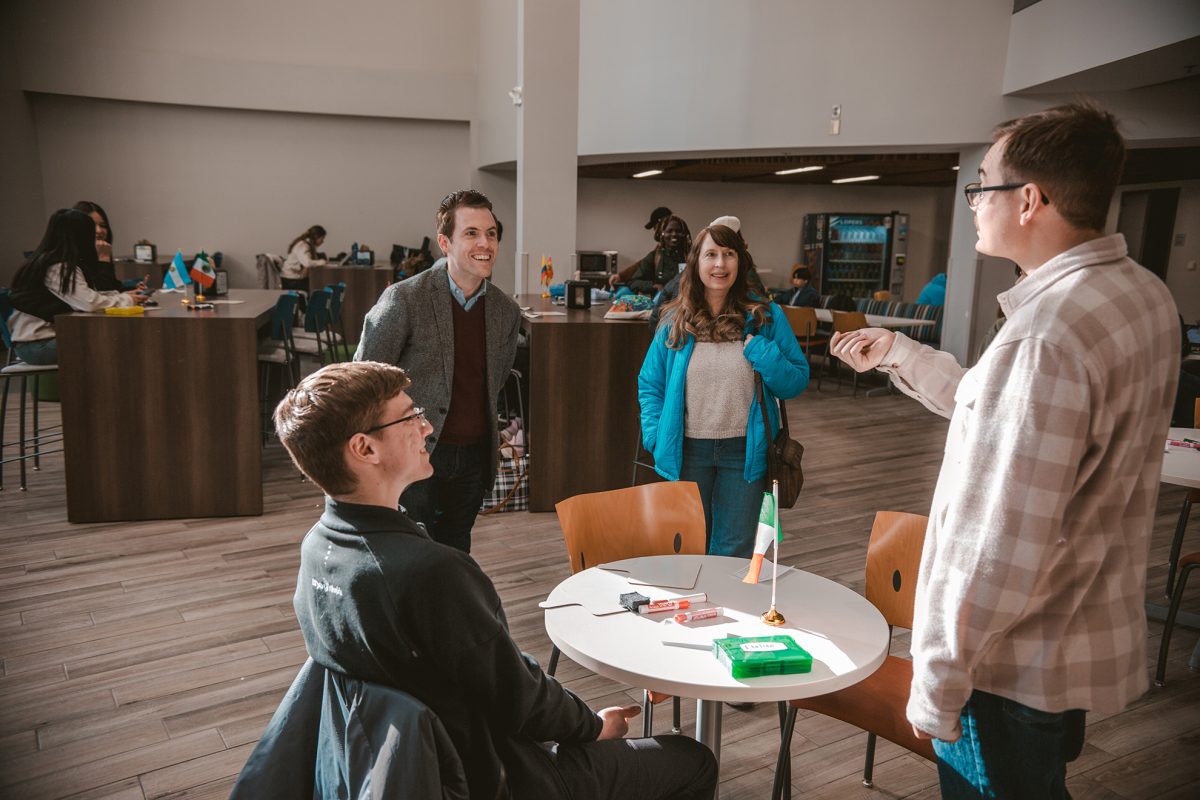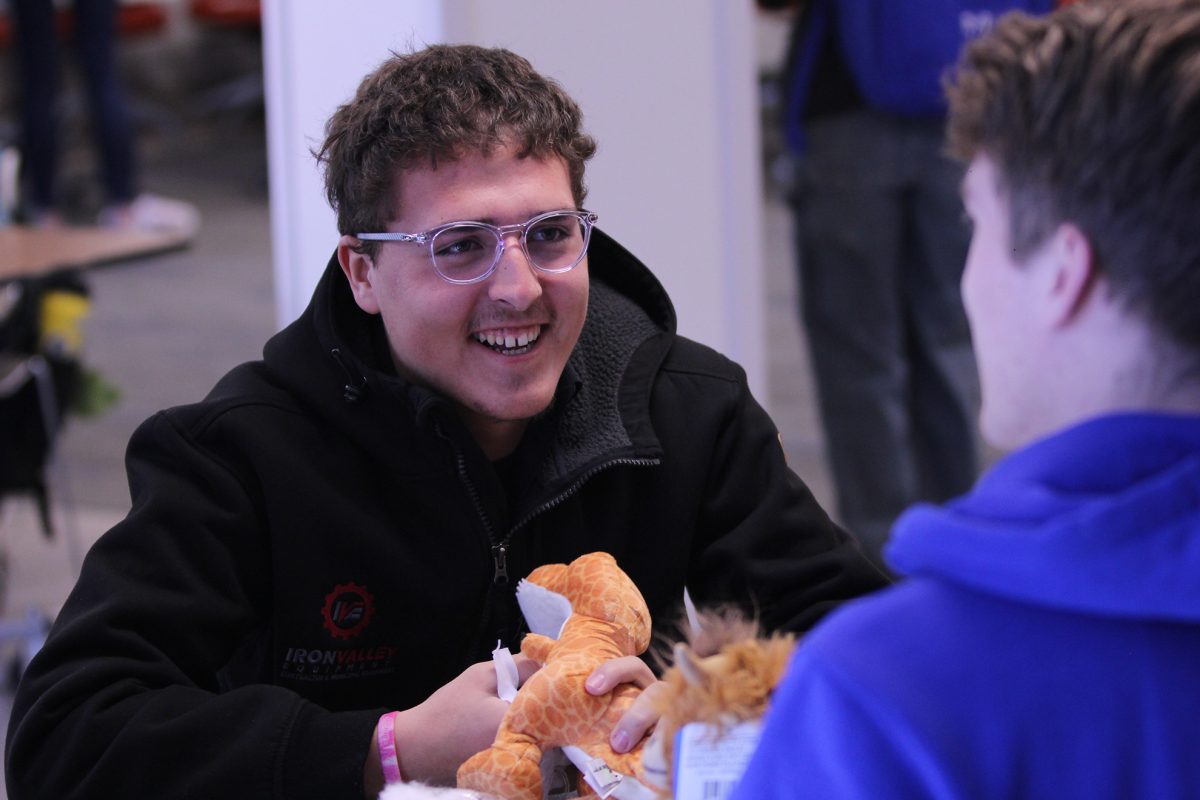Guest scientists at Merryman will lend insight April 17, on upcoming event Great American Solar Eclipse
Brock Madsen
Antelope Staff
Near the end of summer 2017, on Aug. 21, residents in and around Kearney, Nebraska will have among the best access for a total solar eclipse that stretches from coast to coast over the United States. The upcoming eclipse is one of the most anticipated astronomical events in recent history, with as many as 14 states being in the path of totality.
UNK science honorary Sigma Xi has taken the initiative to help generate interest and knowledge of this astronomical event by arranging an April 17 panel discussion, at the Merryman Performing Arts Center. The event is free and will feature Dr. Doug Biggs from the University of Nebraska at Kearney, Dr. Daniel Kennefick from the University of Arkansas, and Dr. Phil Plait from the Discovery Channel series “How the Universe Works.”
Sigma Xi chair, Dr. Allen Thomas, said, “This event is intended to educate and build enthusiasm in the community and schools of central Nebraska about the upcoming solar eclipse with historical and scientific context provided by our expert panel and ultimately its goal is to promote science.”
During the panel discussion, each guest speaker will have 20 minutes to share the material they prepared regarding the eclipse, followed by a 30-minute period wherein audience members may address the speakers for questions.
Plait, The Bad Astronomer
Dr. Plait, aka the Bad Astronomer, says he plans to quickly address misconceptions about eclipse viewing. For example, many people think that looking directly at the sun, even during a total eclipse, will damage one’s eyes. Plait will set minds at ease, detailing the logic behind why a total solar eclipse is one of the only cases when you can look directly at the position of the sun, albeit for a very specific and short amount of time.
Plait plans to spend the rest of his speaking time elaborating on the significance of the event. Due to tidal forces, the moon’s orbit is growing larger. In other words, the moon is getting further away, at a rate of around four centimeters a year, “or about the same rate at which fingernails grow,” Plait said.
Due to the size and distance of our moon today, it is virtually the same apparent size as the sun as seen from earth. This means that the moon can perfectly block the disk of the sun, leaving only the corona visible, creating a perfect total eclipse. In fact, Earth is the only planet we know of yet, with such conditions that allow for total solar eclipses.

Such an eclipse is, however, a limited time event. Since the moon is moving further way, it will – over the course of millions of years – become smaller in apparent size, and one day, total solar eclipses will be ancient legend. Those alive today are witnessing the time of legend, and Plait aims to spread awareness of that, among other things.
Kennefick, Einstein Papers Dr. Kennefick, editor for the Einstein Papers and contributor to the study of gravitational waves, plans to talk largely about the 1919 eclipse expedition organized by Sir Arthur Stanley Eddington and Sir Frank Watson Dyson.
In 1919, a total solar eclipse, unlike the one happening this year, was only visible in the southern hemisphere, and much of its path was across the Atlantic Ocean, rather than largely being viewable from land.
Sir Eddington and Sir Dyson launched an expedition that would make possible a scientific experiment, which would test a hypothesis called gravitational lensing, put forth by an unknown scientist at the time, Albert Einstein.
The success of the experiment supported Einstein’s general theory of relativity, and Einstein became famous practically overnight due to the evidence for this theory.
All in all, the story of the 1919 expedition is a story of revolution, due to the overthrowing of the scientific status quo of the time, which was set in place by Sir Isaac Newton, for the new era of thinking brought to light by the up and coming Albert Einstein.

Nebraska residents and Kearney itself are among the privileged locations that will fall directly under the shadow of the total eclipse.
It is also a testament to the borderless brotherhood of the scientific community; World War I had just ended, wherein the English and German forces had been on opposing sides. Yet, here were English scientists, Eddington and Dyson, going to great lengths to test the theory of a German scientist. Einstein’s success would mean the overthrow of the most famous English scientist up until that point in history.
Biggs, historical interpretations
Dr. Biggs, fellow of the Royal Historical Society and professor of history at UNK, will talk about historical interpretations of solar eclipses. Nowadays, eclipses are fun for the whole family and treasure troves of data for scientists, but throughout history eclipses were often seen as signs from the heavens and could have societal wide impacts. Biggs will elaborate how, historically, eclipses, comets and other such astronomical phenomena, were not taken as lightly as they are today and were often interpreted as omens of bad things to come.
It is one thing to enjoy the upcoming phenomenon that is the impending eclipse at face value, but UNK Sigma Xi and its guest speakers encourage those of the central Nebraska area to attend the panel discussion, April 17, and leave with a greater understanding of the scientific and historical significance of eclipses, like the one fast approaching.






























